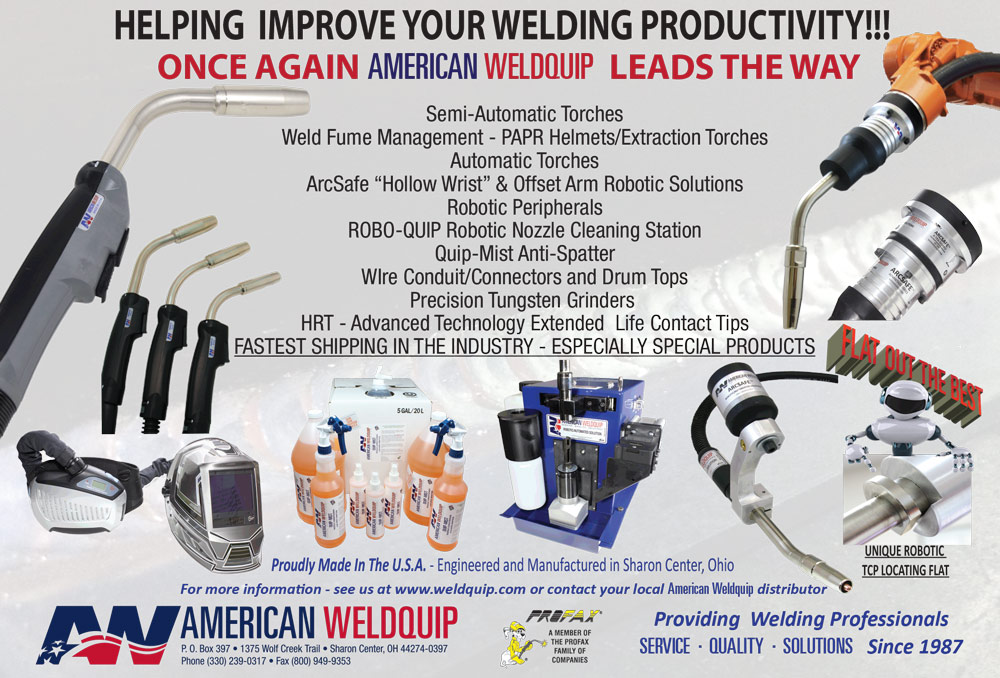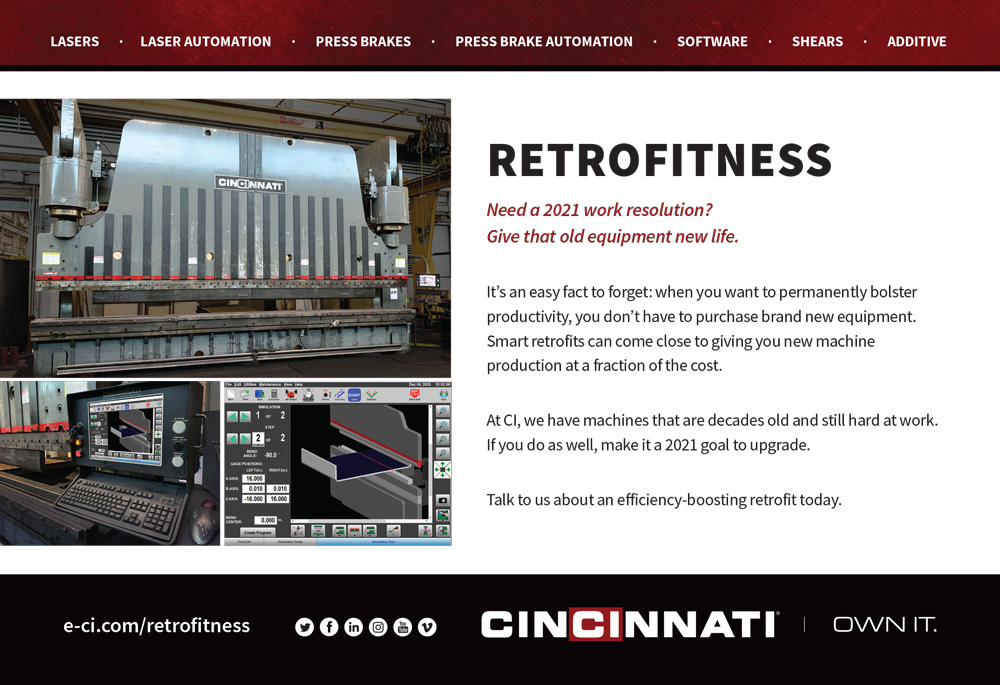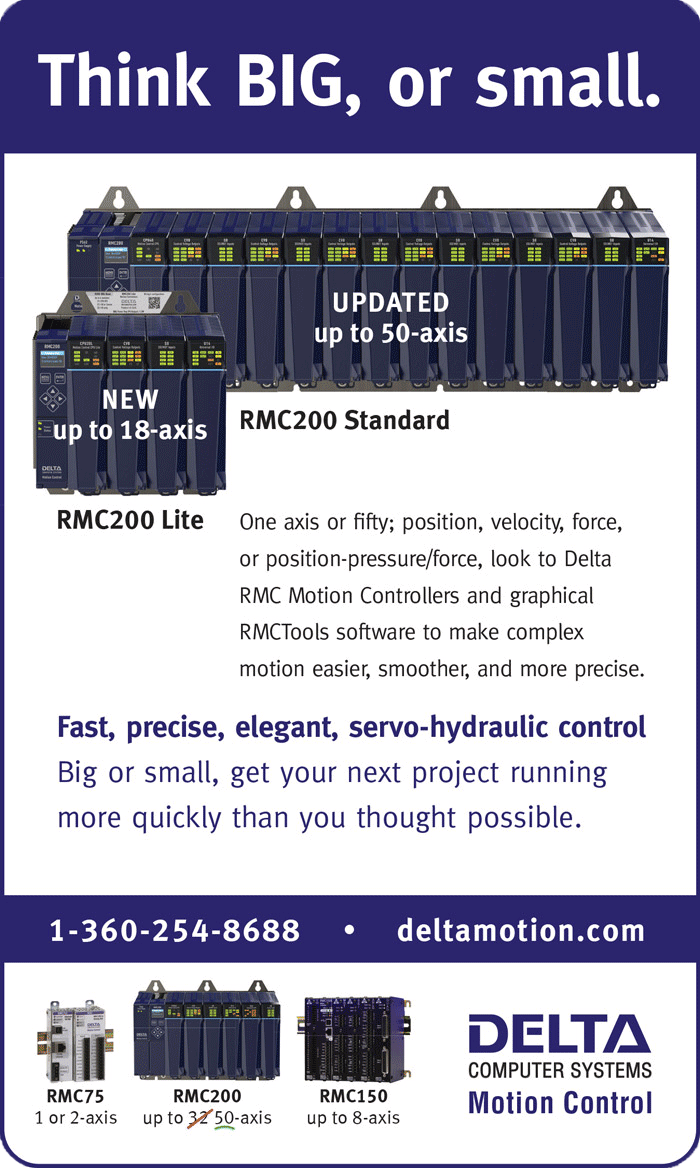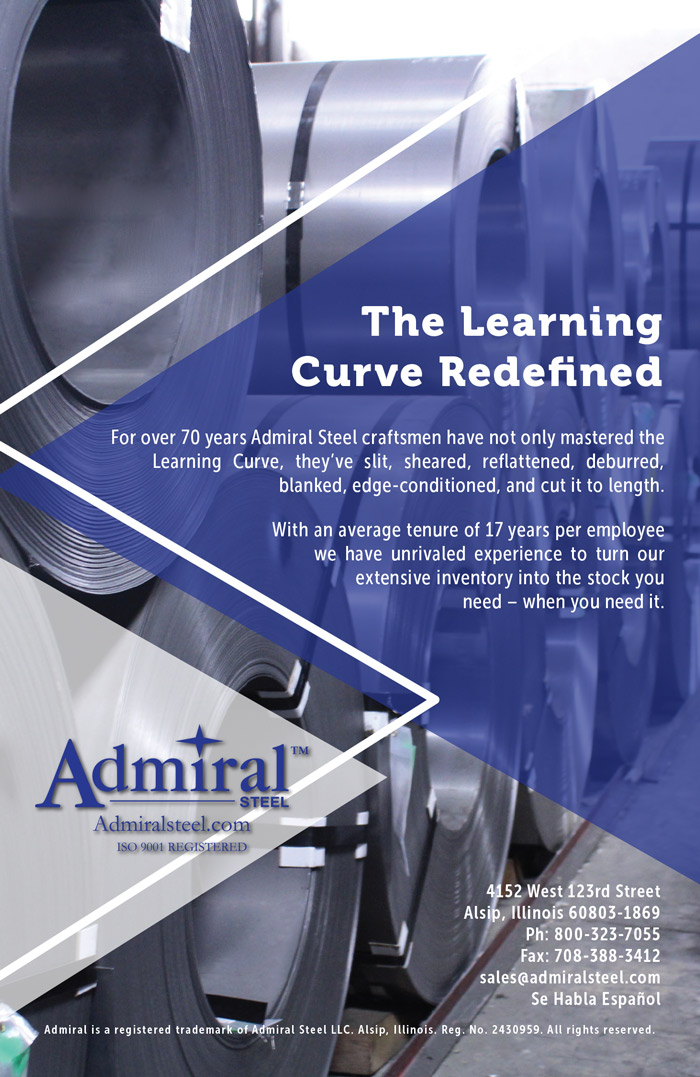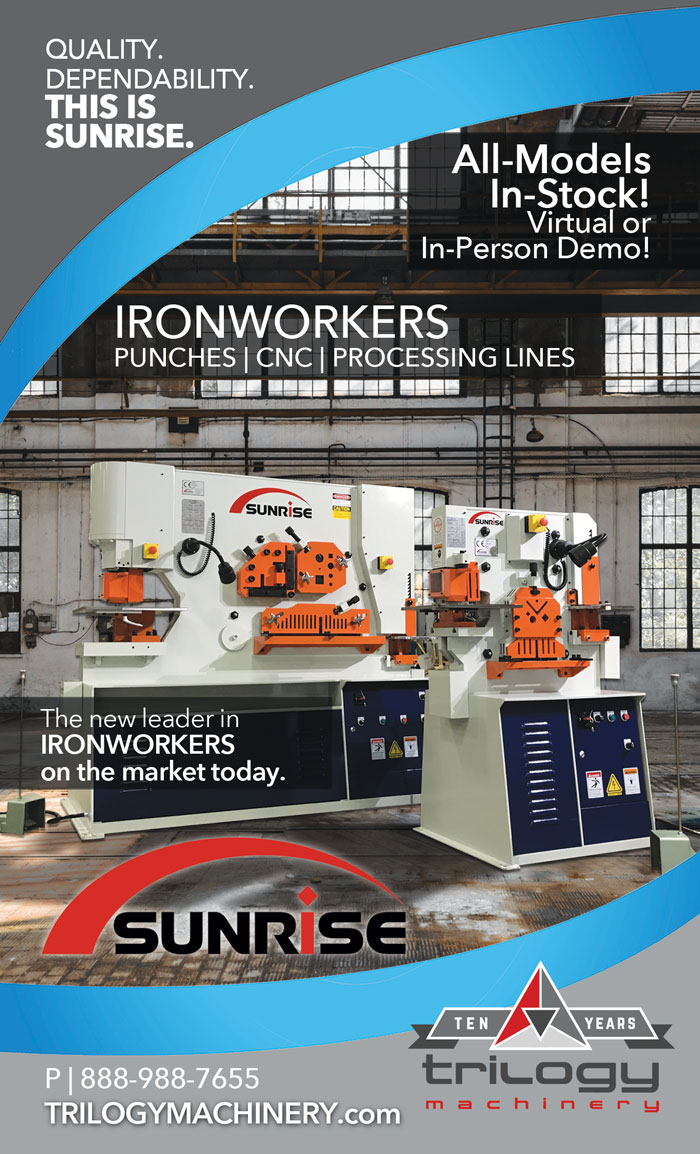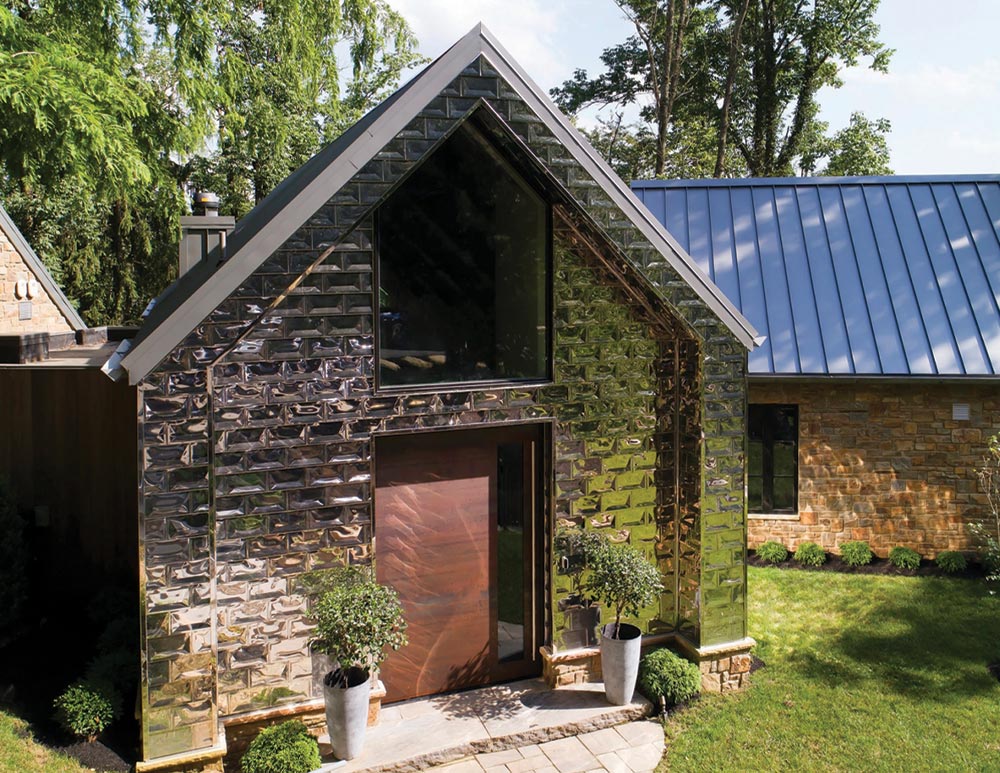
The large 4-ft. by 10-ft. front door is fabricated from Corten Steel on a pivot. Corten also is used to clad the exterior of a lap pool perched over the cliff that leads down to the adjacent pond. Angle iron was used for gutters. The material’s strength allows the gutters to serve a dual purpose as a snow retention system.
The house is situated on the side of a cliff with a sloped, 45-degree driveway. Carrollton Design Build, based in Paoli, Pennsylvania, served as general contractor for the project. The company was required to use lifts and scaffold systems to maneuver material into place.
3GHC’s Architect Carl Gutilla said he built the layout around the repurposed foundation of the lot’s previous home, a linear, 1960s glass residence that had fallen into disrepair. Gutilla worked with Petersen during the design process. Its architectural metal cladding products are available in multiple gauges of steel and aluminum. PAC-CLAD products include standing seam roof panels, hidden- and exposed-fastener wall panels, flush- and reveal-joint panels, vented or solid soffit panels, perforated metal, coil and flat sheet, composite panels, column covers, plus fascia and coping.
 [In the wake of the pandemic], general contractors may need to self-perform a lot of the work they would normally sub out and build those capabilities in house.
[In the wake of the pandemic], general contractors may need to self-perform a lot of the work they would normally sub out and build those capabilities in house. 
Michelle Meisels
Deloitte

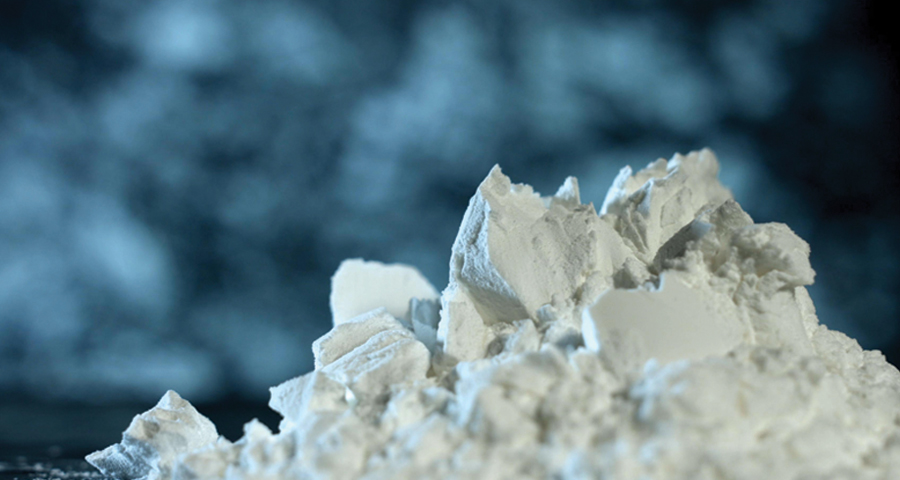
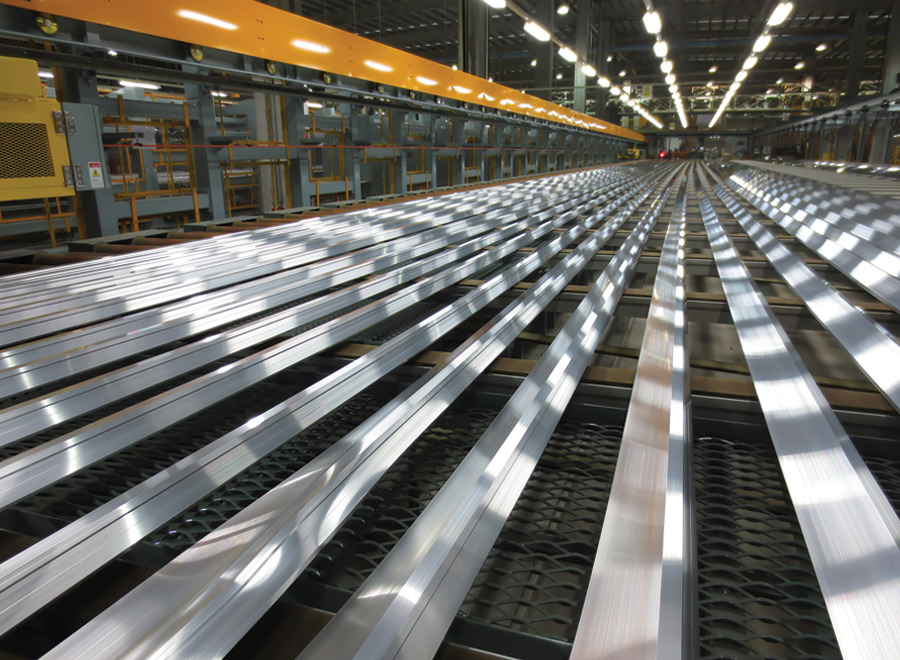



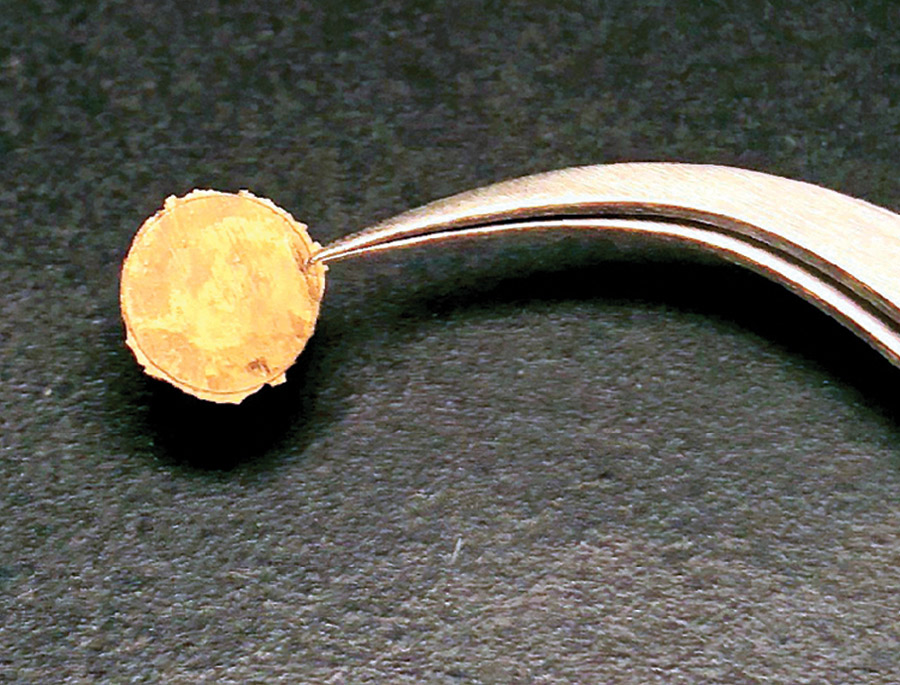
A group of Brown University researchers has found a way to customize metallic grain structures from the bottom up. In a paper published in the journal Chem, the researchers show a method for smashing individual metal nanoclusters together to form solid macro-scale hunks of solid metal. Mechanical testing of the metals manufactured using the technique showed that they were up to four times harder than naturally occurring metal structures. “What we’ve done is create nanoparticle building blocks that fuse together when you squeeze them. This way we can have uniform grain sizes that can be precisely tuned for enhanced properties,” said Ou Chen, an assistant professor of chemistry at Brown and corresponding author of the new research. For this study, the researchers made centimeter-scale “coins” using nanoparticles of gold, silver, palladium and other metals. Items of this size could be useful for making high-performance coating materials, electrodes or thermoelectric generators (devices that convert heat fluxes into electricity). But the researchers think the process could easily be scaled up to make super-hard metal coatings or larger industrial components.


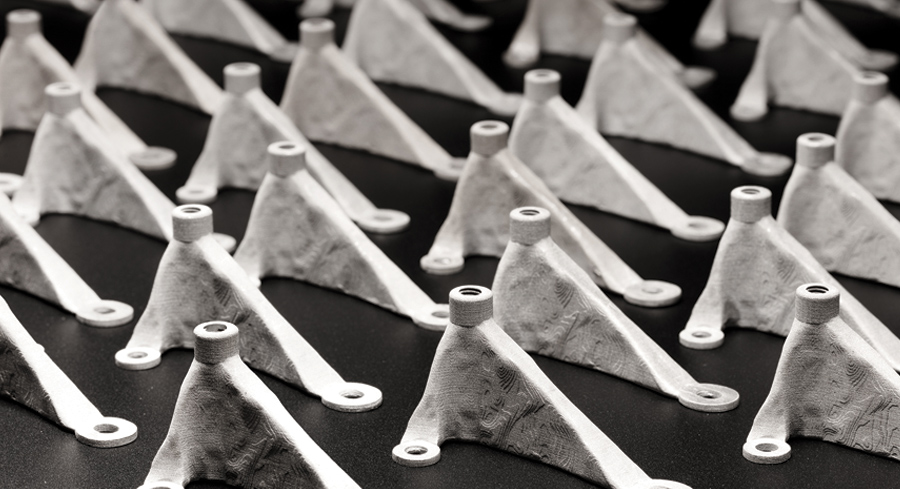


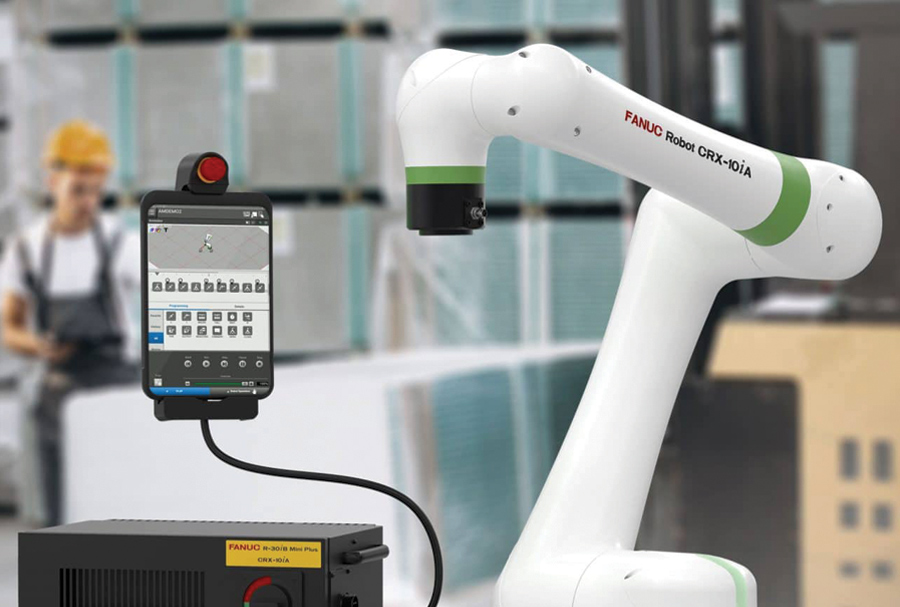


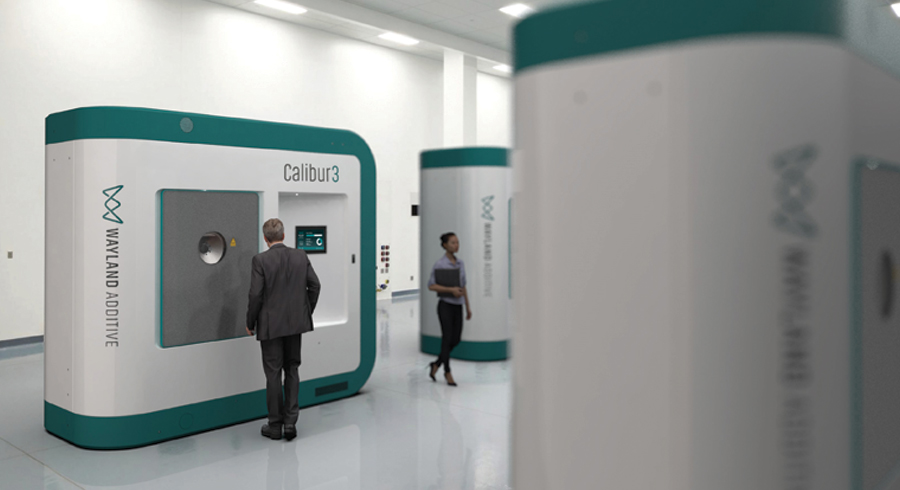
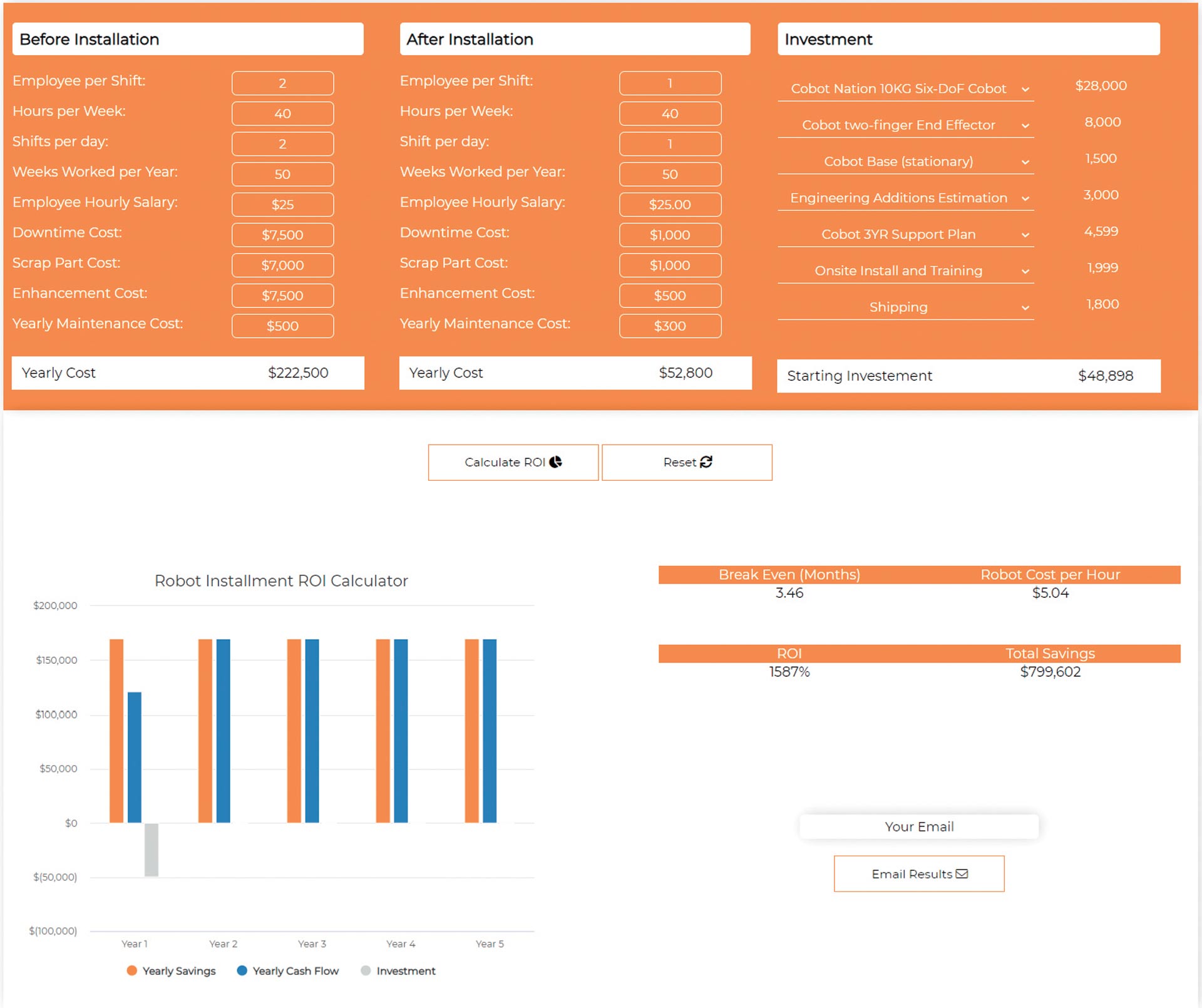

at ffjournal.net
